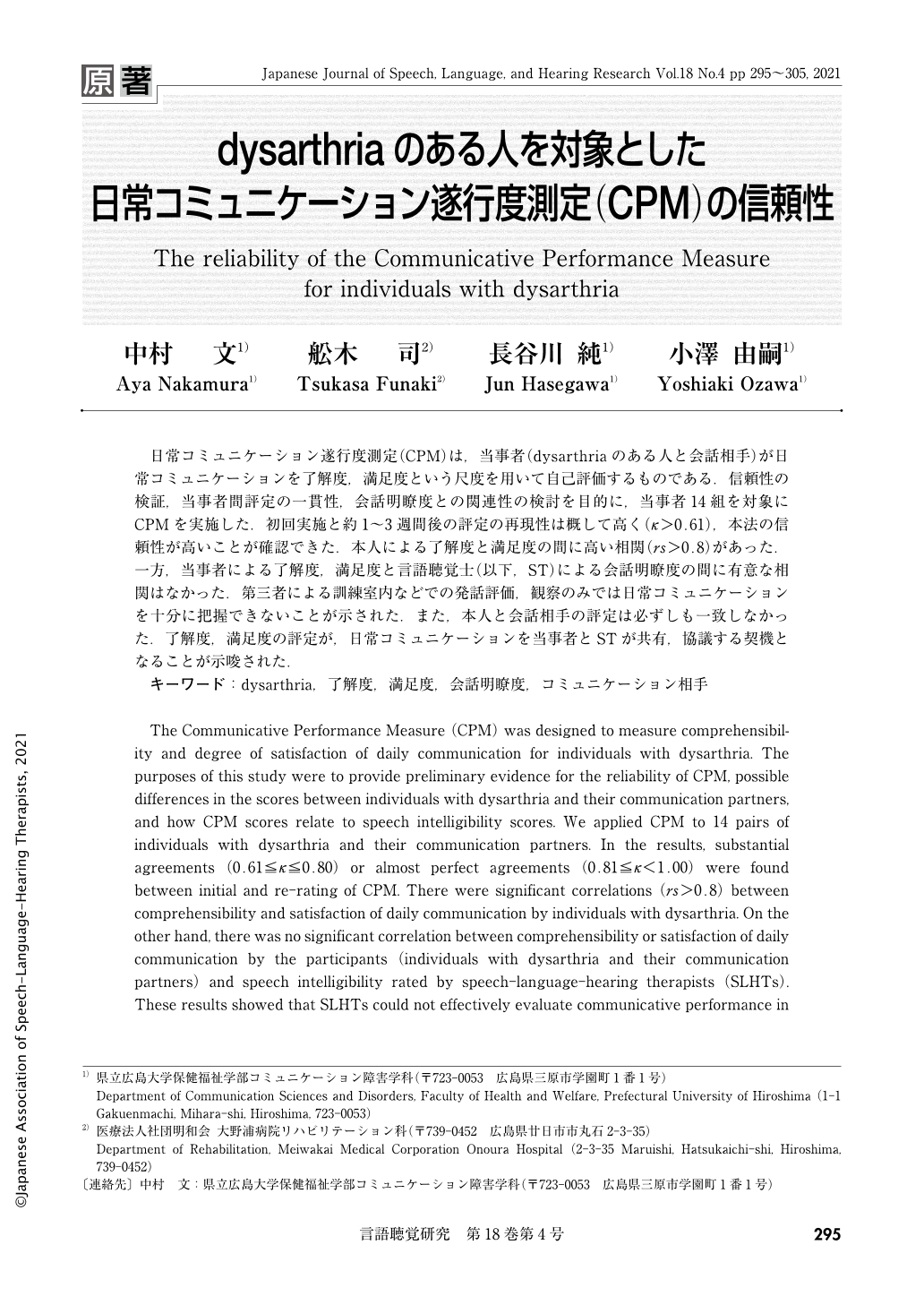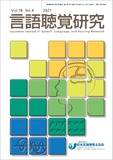Japanese
English
- 有料閲覧
- Abstract 文献概要
- 1ページ目 Look Inside
- 参考文献 Reference
- サイト内被引用 Cited by
日常コミュニケーション遂行度測定(CPM)は,当事者(dysarthriaのある人と会話相手)が日常コミュニケーションを了解度,満足度という尺度を用いて自己評価するものである.信頼性の検証,当事者間評定の一貫性,会話明瞭度との関連性の検討を目的に,当事者14組を対象にCPMを実施した.初回実施と約1〜3週間後の評定の再現性は概して高く(κ>0.61),本法の信頼性が高いことが確認できた.本人による了解度と満足度の間に高い相関(rs>0.8)があった.一方,当事者による了解度,満足度と言語聴覚士(以下,ST)による会話明瞭度の間に有意な相関はなかった.第三者による訓練室内などでの発話評価,観察のみでは日常コミュニケーションを十分に把握できないことが示された.また,本人と会話相手の評定は必ずしも一致しなかった.了解度,満足度の評定が,日常コミュニケーションを当事者とSTが共有,協議する契機となることが示唆された.
The Communicative Performance Measure (CPM) was designed to measure comprehensibility and degree of satisfaction of daily communication for individuals with dysarthria. The purposes of this study were to provide preliminary evidence for the reliability of CPM, possible differences in the scores between individuals with dysarthria and their communication partners, and how CPM scores relate to speech intelligibility scores. We applied CPM to 14 pairs of individuals with dysarthria and their communication partners. In the results, substantial agreements (0.61≦κ≦0.80) or almost perfect agreements (0.81≦κ<1.00) were found between initial and re-rating of CPM. There were significant correlations (rs>0.8) between comprehensibility and satisfaction of daily communication by individuals with dysarthria. On the other hand, there was no significant correlation between comprehensibility or satisfaction of daily communication by the participants (individuals with dysarthria and their communication partners) and speech intelligibility rated by speech-language-hearing therapists (SLHTs). These results showed that SLHTs could not effectively evaluate communicative performance in daily life only based on assessment and observation of speech in clinical situations. The ratings of comprehensibility and satisfaction of daily communication by individuals with dysarthria were not consistent with those by their communication partners. These findings suggest that CPM is a useful tool for individuals with dysarthria, their communication partners and SLHTs to share their views and discuss daily communicative performances.

Copyright © 2021, Japanese Association of Speech-Language-Hearing Therapists. All rights reserved.


